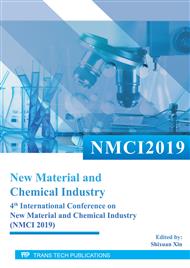p.272
p.279
p.285
p.290
p.299
p.306
p.314
p.326
p.337
Investigation and Evaluation of the Emulsified Asphalt with Waterborne Epoxy Resin
Abstract:
Compared with SBR latex, waterborne epoxy resin has obvious advantages. The cured epoxy resin emulsified asphalt material has stronger mechanical properties, but it is less used in asphalt modification applications. Aiming at this problem, this paper uses waterborne epoxy resin as the modified material of emulsified asphalt, and carries out performance characterization and road performance evaluation of waterborne epoxy resin modified emulsified asphalt and its mixture under different dosages. Fluorescence microscopic analysis of waterborne epoxy asphalt with a content of 8wt%, 15wt%, 30wt%, and 50wt%, respectively, shows that the resin content should not exceed 30wt% to ensure the performance of asphalt. The bonding properties of SBR modified emulsified asphalt and waterborne epoxy resin modified emulsified asphalt with different dosages at 20 °C and 60 °C were analyzed. The results show that the tensile strength and oblique shear of waterborne epoxy modified emulsified asphalt. The strength is higher than SBR modified emulsified asphalt, and its high temperature resistance is better than SBR modified emulsified asphalt material. The road performance analysis was carried out on the mixture prepared by the aqueous epoxy modified emulsified asphalt with the content of 0wt%, 8wt%, 15wt% and 30wt% respectively. The results show that with the increase of waterborne epoxy content, the Marshall stability, splitting strength and high temperature rutting resistance of the mixture increase more obviously. The freeze-thaw splitting strength of the waterborne epoxy resin mixture is 13% higher than that of the pure emulsified asphalt mixture, and the splitting strength is also significantly improved. Due to the high stiffness of the waterborne epoxy resin after curing, the maximum bending strain of the mixture is reduced, and the recommended dosage is not more than 30% by weight. On the whole, the introduction of waterborne epoxy resin could greatly improve the strength and road performance of the asphalt, and could be used as a proper road repair material.
Info:
Periodical:
Pages:
337-345
Citation:
Online since:
May 2020
Authors:
Price:
Сopyright:
© 2020 Trans Tech Publications Ltd. All Rights Reserved
Share:
Citation:


